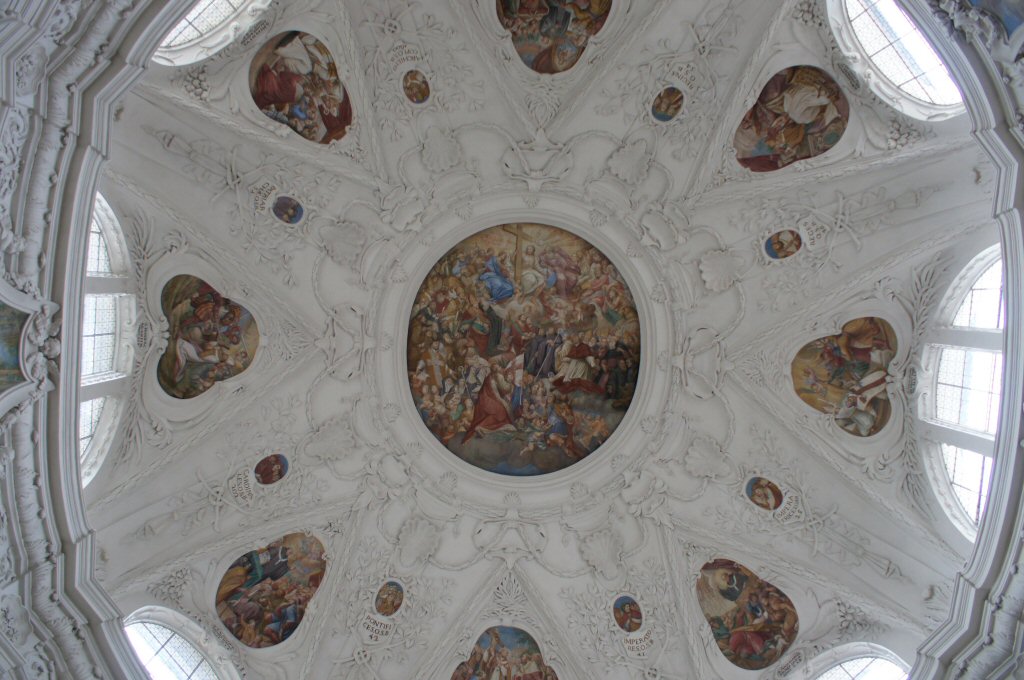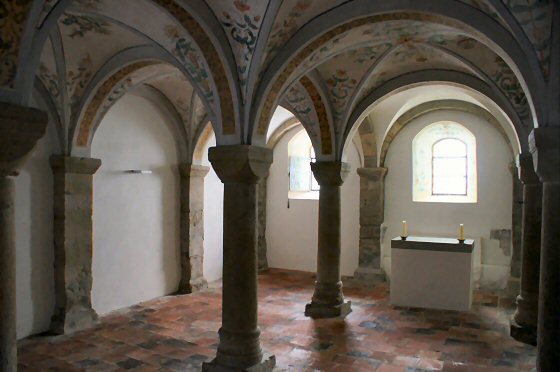Muri Monastery is located in the Reuss Valley in the Swiss canton of Aargau. The foundation dates back to 1027. Ita, Countess of Lorraine, founded the monastery on her lands together with her husband, Count Radebot of Habsburg. Benedictine monks from Einsiedeln settled the monastery in 1032. On 11 October 1064 Bishop Rumold consecrated the church to St. Martin of Tours. Around 1080 a convent for women was established, which was moved to Hermetschwil around 1140.
During eight centuries the Habsburg house monastery developed to its present form and size. In the church, the Romanesque crypt, the Gothic high choir and the Baroque central building bear witness to the fact that the monastery buildings were extended over the centuries. In 1841 the Grand Council of Canton Aargau decided to abolish the canton's eight existing monasteries at the time, including those of Muri. In 1845 the abbot and convent moved to the former Augustinian monastery of Gries near Bolzano. At the same time, the Benedictines of Muri took over the management of the Sarnen College (today's Cantonal School of Obwalden).
The convent of Muri still lives on today in Gries in South Tyrol and in Sarnen. Since 1960, a small group has again been living in the hospice in Muri.
West front with the striking towers
The baroque monastery church stands on the site of the Romanesque basilica demolished in 1694.
Interior view

Picture of the dome
Muri owns five organs. The large organ on the west gallery, originally with 29 stops, dates from 1630. When the church was rebuilt in the Boroque period in 1695/97 to its present form with the dome-vaulted octagon in the centre, two gallery niches were created, which also open towards the transept, an ideal place for rood screen organs. On the epistle side, Hans Melchior von Zuben from Unterwalden reinstalled the Schnyder organ in 1696 and built a new instrument in the niche on the Gospel side. In the west the nave was extended beyond the tower front and the Schott organ was rebuilt on a new, recessed gallery. Immediately before the interior was redesigned in rococo style, Prince Abbot Gerold I. Haimb replaced both rood screen organs in 1743 with new instruments by Joseph and Viktor Ferdinand Bossart, the first representatives of the famous dynasty of organ builders from Baar in Canton Zug.
Large organ
Gospel Organ (Evangelienorgel)
The upper picture on the right side shows the Holy Brother Klaus.
Manual of the gospel organ
Epistle Organ (Epistelorgel)
Under the pulpit kneel the devoutly praying founders.
Choir organ with organist
The fifth organ is a regal organ.
The three-row choir stalls in Muri date from the 17th century and were carved from oak by the artist Simon Bachmann, including the crowning figures with depictions of the apostles, evangelists, teachers of the church and other saints. The reliefs above the rows of seats, on the other hand, are made of lime wood and have a strong depth effect. The backs of the chairs towards the transept arms are made of walnut wood.
Of the Romanesque church, consecrated around 1064, only the three-aisled hall crypt remains.

The ceiling paintings date from the early 16th century, they were later whitewashed and exposed during renovation work in 1932/33.
In the cloister with its Renaissance stained glass windows is the Loretto Chapel with the Habsburg burial place and the treasury.
see also